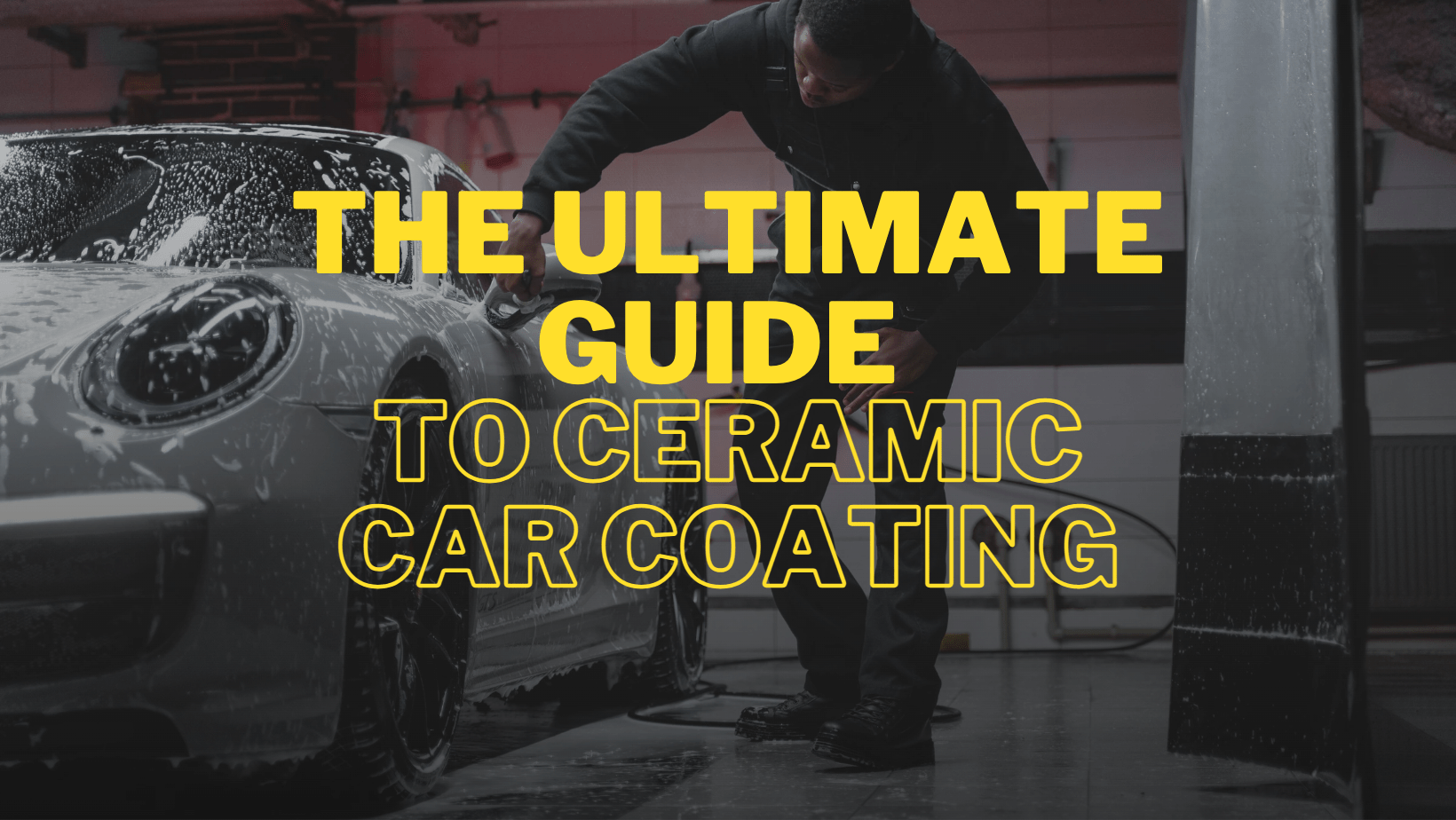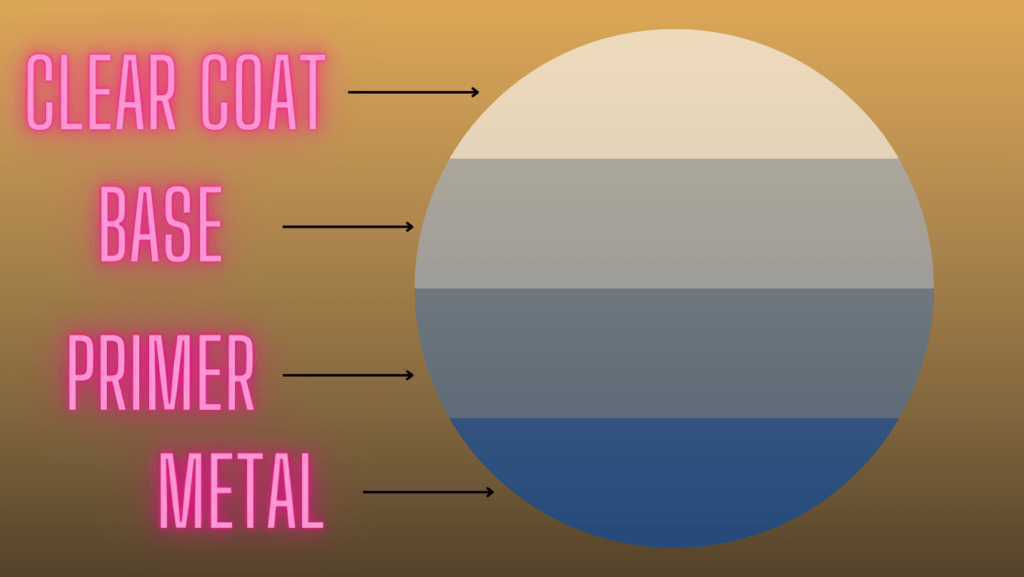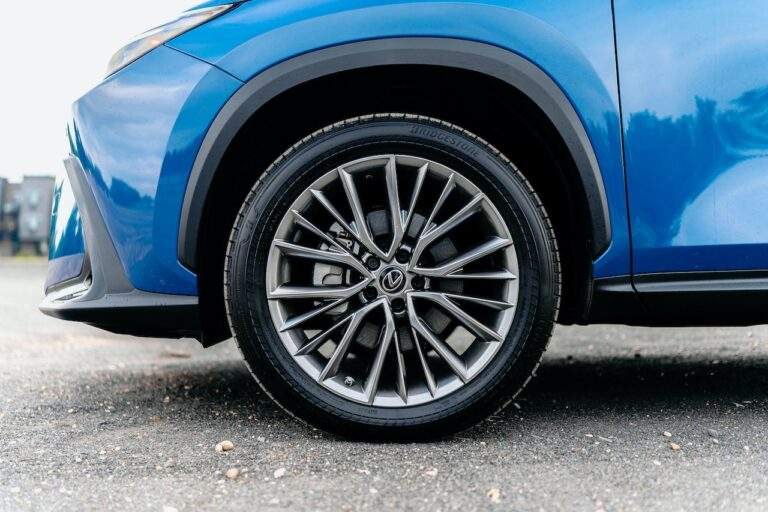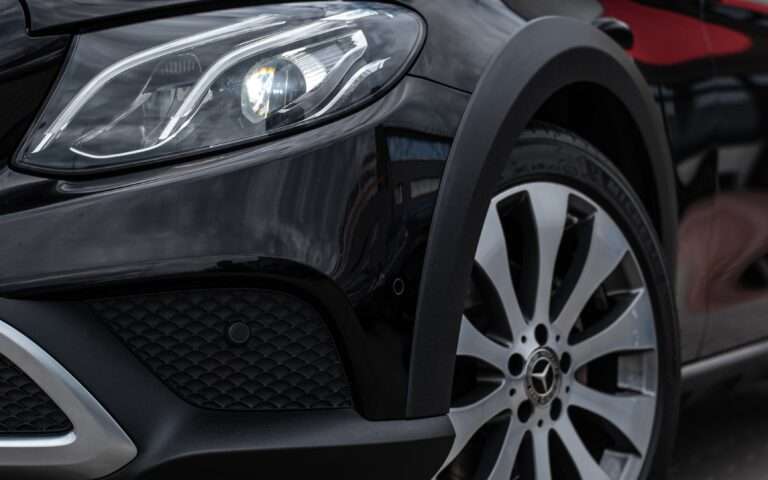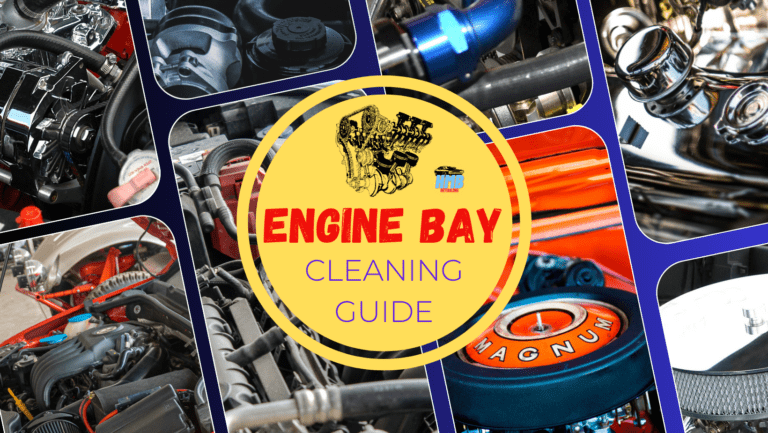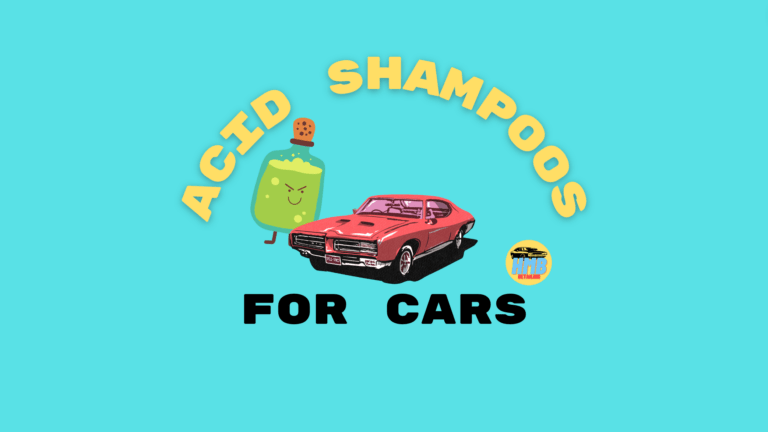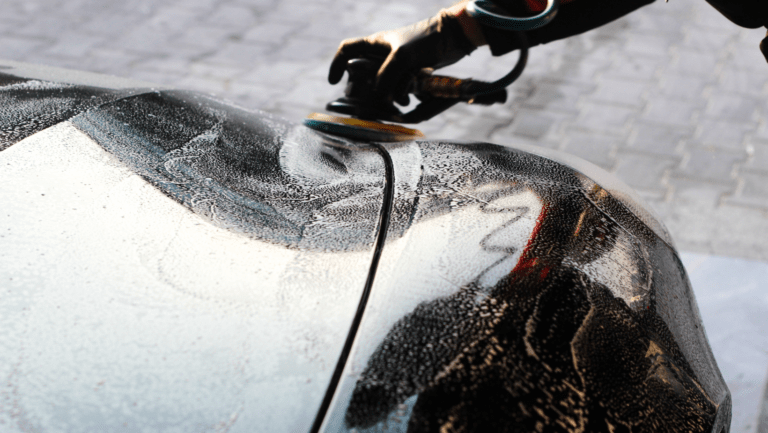Ceramic Car Coating: The Ultimate Guide to Protect Your Vehicle
Every car owner wants to keep their car clean, shiny, and undamaged for as long as possible. Unfortunately, keeping a car brand new look is complicated and demands knowledge in car care. Since a car leaves the car’s factory, its paint surface face not friendly environmental conditions, road chemicals, and low-quality care. All these factors make the dreams of car owners more distant from reality. Some car owners give up. They hope their car will not lose value too much without proper car care before they sell it in 3 years. But what if you love your car and want to keep its new look longer? For this reason, we are going to discuss today maybe one of the most effective protective coating for cars – ceramic car coating.
When you are seeking a long-lasting solution for protecting your car’s paint – ceramic car coating is worth considering. In this guide, we will explore what ceramic car coating is, how it works, and its benefits compared to traditional waxing. We will also provide a step-by-step guide on how to apply ceramic car coating, the longevity of the coating, top brands in the market, and cost considerations.
What is Ceramic Car Coating?
Previously we discussed car scratch repair, and we know that paint consists of thee main coatings: primer, base coat, and clear coat. We know a clear coat is a protective layer, so why do we need more? A clear coat is a sensitive layer, so it damages pretty quickly. You can ruin it even after one low-quality car wash. Some might say we can polish our cars to fix the clear coat. So why do we need to waste money to protect it?
When we polish our cars, we cut a thin layer of clear coat. It means we cannot make it unlimited times. So whenever we own a new car or a 20-year-old car, when we use ceramic car coatings, we add a top coat to our clear coat and leave ourselves more time to polish a car. For example, you have a 10-year-old car that you polished two times. Let’s say when the car was brand new you had an available clear coat for polishing it five times, so now you are left with 3. It means that you have two options to fix that, you can polish it and stay with a thin and weak coating that will be available for two times of polishing. The second option is to polish and apply a ceramic coating that will restore it to the factory five times for polishing.
The Basics of Ceramic Car Coating
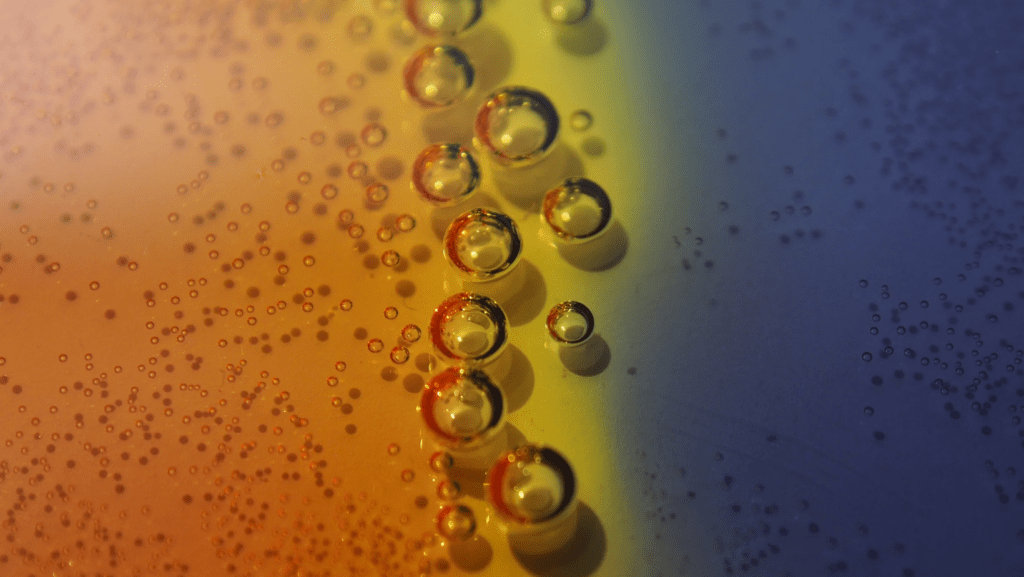
Ceramic car coating is a liquid polymer that chemically bonds with your car paint and creates a hard protective coating. Once you apply a ceramic coating to your car’s paint, a chemical reaction appears. This reaction causes the polymers to cross-link and creates a strong and durable bond with your car’s paint surface.
This polymer bonding creates a hard coating that is much harder and more durable than traditional protective coatings like waxes, sealants, and spray waxes. It means that it’s able to provide better protection from scratches, UV rays, aggressive chemicals, and other environmental contaminants.
The technology behind ceramic coating is based on nanotechnology. The car paint surface is not perfect even after polishing. The ceramic coating contains tiny nanoparticles that fill in the microscopic pores and imperfections of your car’s paint clear coat. This creates a flat and even surface which reflects light more evenly. The result of higher light reflection is a deeper and richer shine that lasts long.
Another benefit of a flat surface after applying the ceramic coating is its incredible hydrophobic properties. The ceramic coating repels water which means that it’s easier to clean your car, and dirt, grime, and other contaminants are less likely to stick to the surface.
The Composition of Ceramic Car Coating

Depending on the manufacturer and specific product, the composition of ceramic car coating can vary. However, the majority of ceramic coatings are composed of a liquid polymer that contains different ingredients, including silicon dioxide (SiO2) and titanium dioxide (TiO2).
Silicon dioxide (SiO2) is a key component of every ceramic coating. It is a naturally occurring mineral that you can usually find in sand and quartz. In ceramic coating, SiO2 is used in the form of tiny nanoparticles, which size is typically ranging from 1 to 100 nanometers. These nanoparticles fill in the microscopic pores and imperfections of the car’s paint. It helps to create a smooth and even surface on a clear coat to resist scratches, UV rays, and other contaminants.
Titanium dioxide (TiO2) is another ingredient commonly found in ceramic car coating. Like SiO2, TiO2 is a naturally occurring mineral. In ceramic coating, TiO2 is used for its ability to reflect and scatter light. It helps to create a deeper, richer shine. TiO2 also has hydrophobic properties. They create the ability of your car’s paint to repel water and other liquids. It makes it easier to clean your vehicle and keep it looking great.
Other ingredients of ceramic car coating can include solvents, resins, and other polymers. Such ingredients help to create the liquid polymer which you can apply to your car’s paint, and they can improve some characteristics of the coating, such as its durability, gloss, and hydrophobicity.
Benefits of Ceramic Car Coating
We already mentioned some benefits of ceramic coating. Let’s summarize and describe more main features of such car paint protection type and why car owners are using it.
Protection Against Environmental Damage
Ceramic car coating is popular and appreciated among car owners due to its ability to protect vehicles’ surfaces from environmental damage. Environmental hazards like UV rays, oxidation, and chemical damage can significantly harm your car’s paint and finish. Ceramic coating is a powerful safeguard for your vehicle from these dangers.
UV Rays

UV rays from direct sunlight can cause extensive damage to your car paint over time, especially to the clear coat and base coat. The UV rays can be a reason for faded and dull paint and can develop unsightly spots. Ceramic car coating provides an additional protective layer and creates a barrier between your car’s paint and harmful UV rays. The coating blocks rays from penetrating car paint and damaging it.
Oxidation
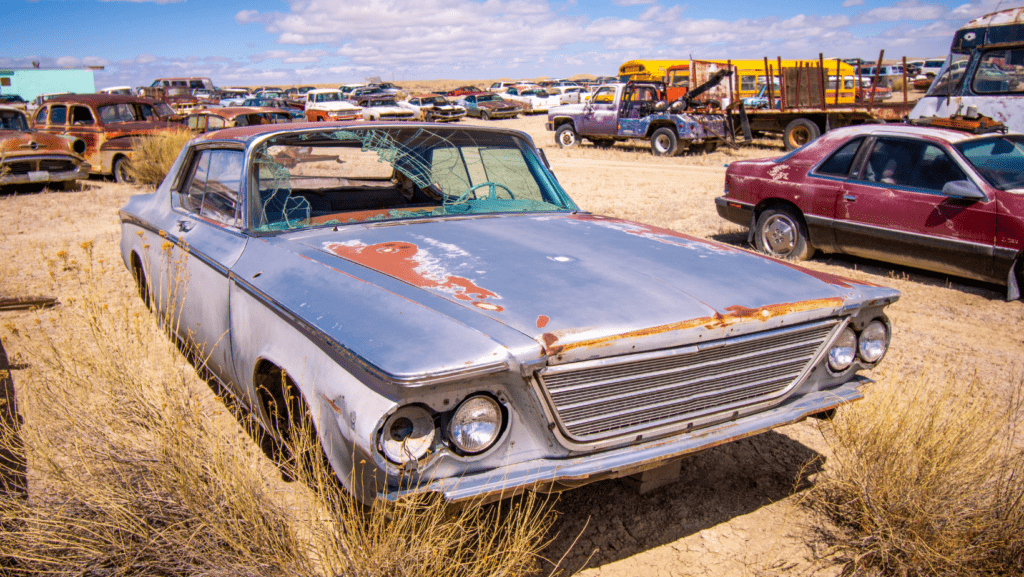
Oxidation is another harmful reason for damaging car paint. When the car’s paint is exposed to oxygen, it can start to break down, causing the paint to fade and lose its luster. Ceramic car coating provides a shield against such environmental hazards by sealing the paint and not letting oxygen come into contact with it. It allows the paint to look fresh longer.
Chemical Damage

Another environmental threat that can cause harm to a car’s finish is chemical damage. Durable contact with such environmental chemicals as acid rain, bird droppings, and tree sap can cause significant damage to a car’s paint job. Ceramic car coating acts as a shield to a car’s paint and protects it from coming into contact with these harmful substances. It protects the car’s paint from etching and other damages, ensuring your car’s finish looks shiny and pristine for longer.
Enhanced Appearance
Another reason why car owners choose ceramic coating is enhancing of car’s appearance. The coating creates a high-gloss finish, making the car look like it came off the showroom floor. Let’s find out how the coating can improve your car’s shine and color.
Improved Shine
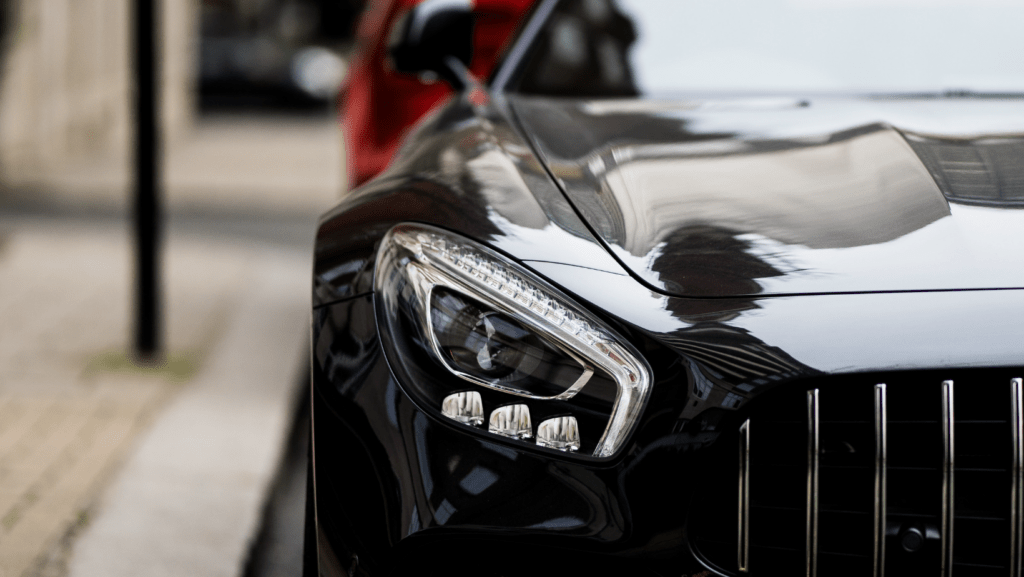
Ceramic car coating creates a deep and glossy finish shine. Sometimes this makes the car color look even better than factory new. Ceramic coating fills minor imperfections and adds a thin transparent layer on top of your clear coat to boost the car’s paint shine to its maximum. When you want a car shine that will turn heads wherever you go, ceramic coating is your choice.
Improved Color
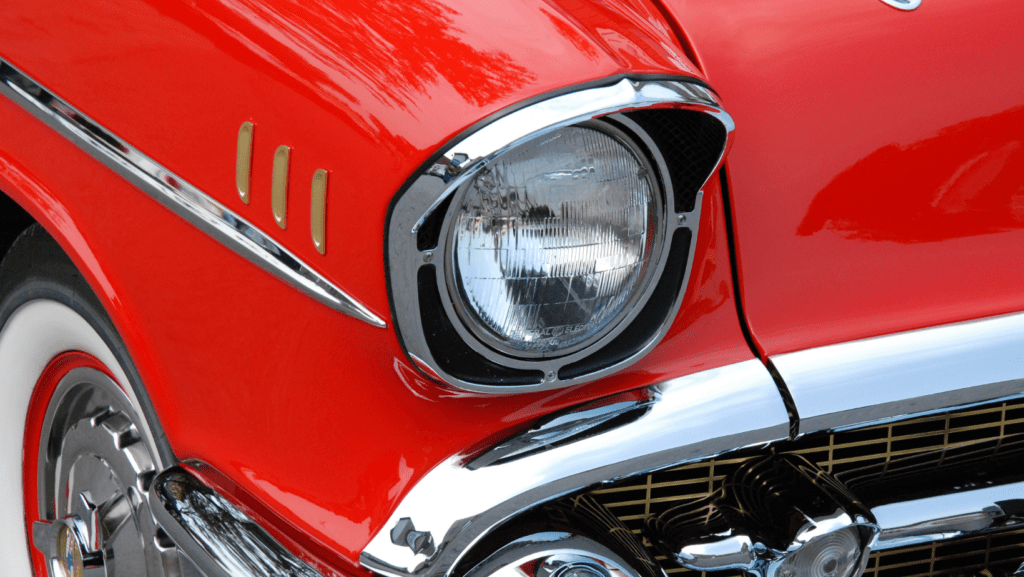
Ceramic car coating can also enhance the color of your car. The coating will add depth and richness to any color, making it look more eye-catching. Such improvement will be the most noticeable on older cars where paint can get faded over time. Ceramic coating will fill some imperfections and restore faded colors.
How to Apply Ceramic Car Coating
Before we start with a guide for ceramic coating, I want to mention that such a process requires experience, knowledge, and specialized tools. So if you are doing it for the first time and want to achieve perfect results, practice before coating your car, or visit a professional detailer who can make the guaranteed proper coating of your vehicle.
1. Preparing Your Car’s Surface
The prep step might be the chief step in ceramic coating application. The results you receive out of coating your car depend on how you prepare your vehicle. If you want the coating to adhere properly and provide maximum protection and shine, prepare your car’s surface accurately. Let’s go through the proper preparation of a car surface for ceramic coating step-by-step.
Step 1: Wash Your Car Thoroughly
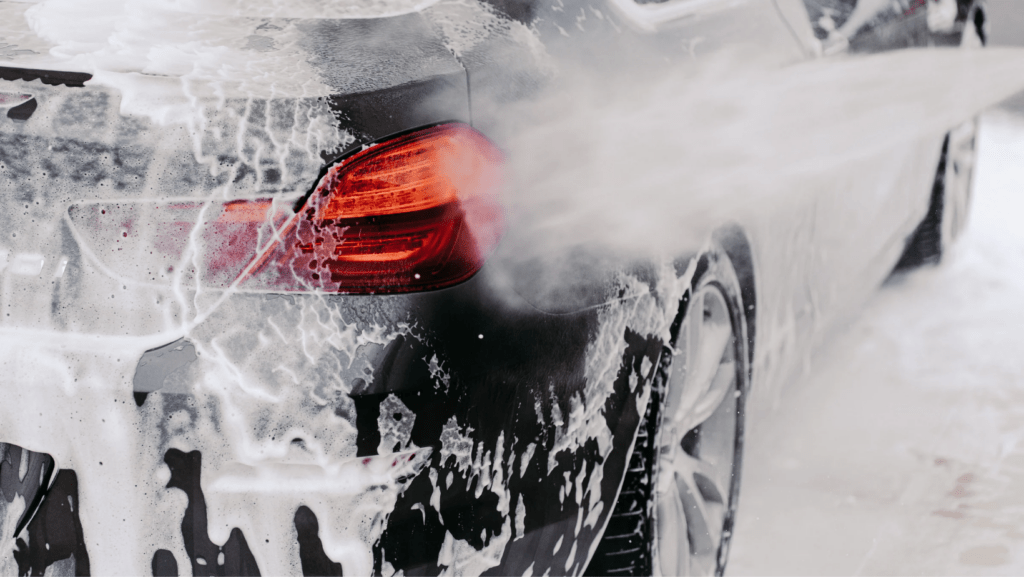
The first step in preparing your car for ceramic coating is to wash your car thoroughly. Remove dirt, grime, and other contaminants using high-quality car wash shampoo and microfiber wash mitt. Pay attention to the areas around the wheels, door handles, and windows, as they tend to accumulate more dirt and debris.
Step 2: Decontaminate the Surface
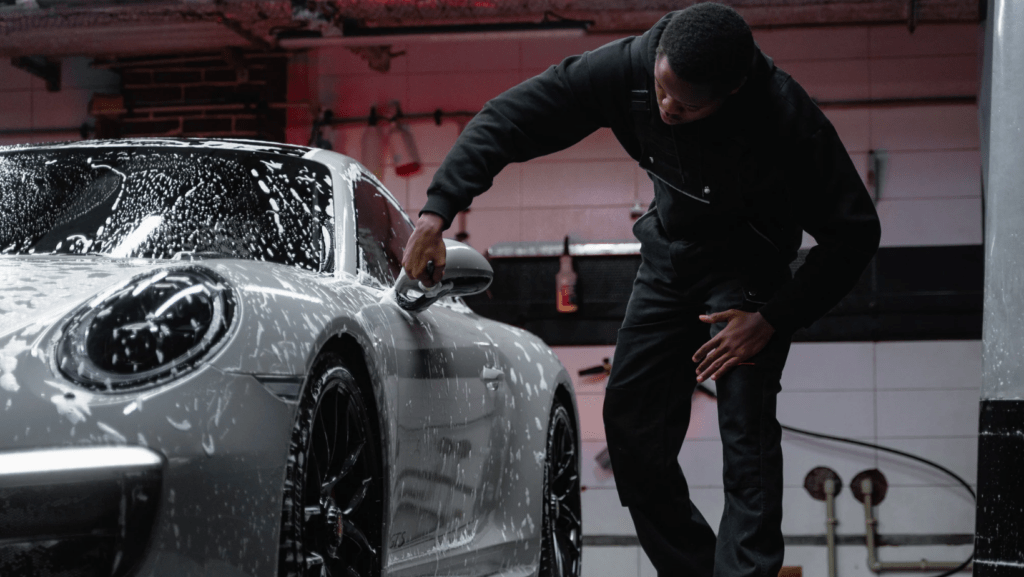
After washing your car, it’s crucial to decontaminate the car’s paint surface to remove any embedded contaminants that might not be visible. This step is similar to preparing your car for waxing, so you can find our detailed instructions for deep car paint cleaning by hand. To remove all old contaminants, use iron removers, tar removers, and clay bars with clay bar lubricants. Clay bars are a popular choice for effective contaminants removal and leaving your paint surface smooth.
Step 3: Correct Any Imperfections
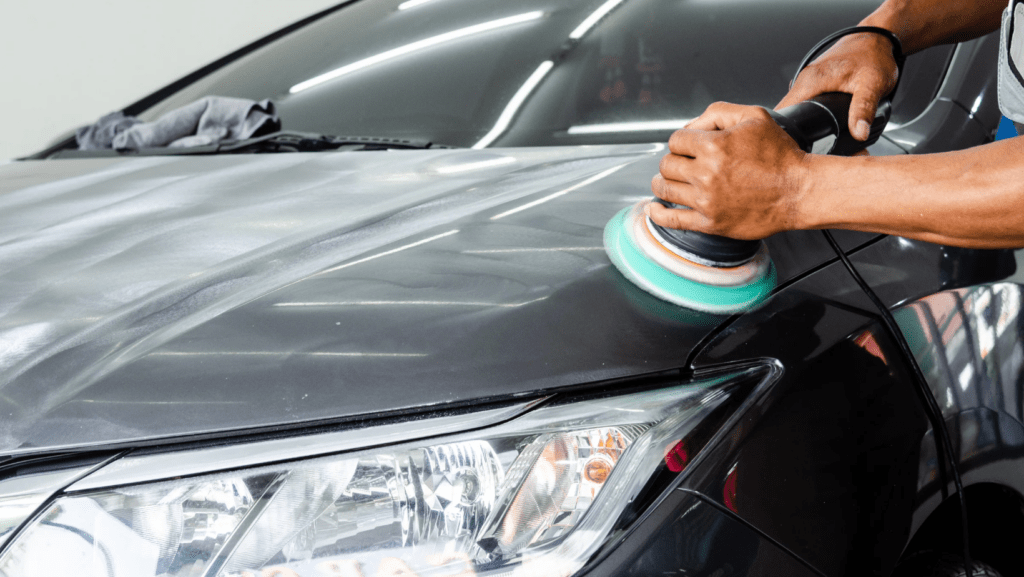
It’s crucial to remove imperfections on the car’s paint surface to create a flat and smooth finish after applying the ceramic coating. You should remove all imperfections such as swirl marks, scratches, or other blemishes present on the surface. For removing scratches, use our ultimate guide to car scratch removal. For correcting swirl marks, minor scratches, and similar imperfections, use a dual-action polisher with a suitable polishing compound.
Step 4: Prep the Surface for Coating
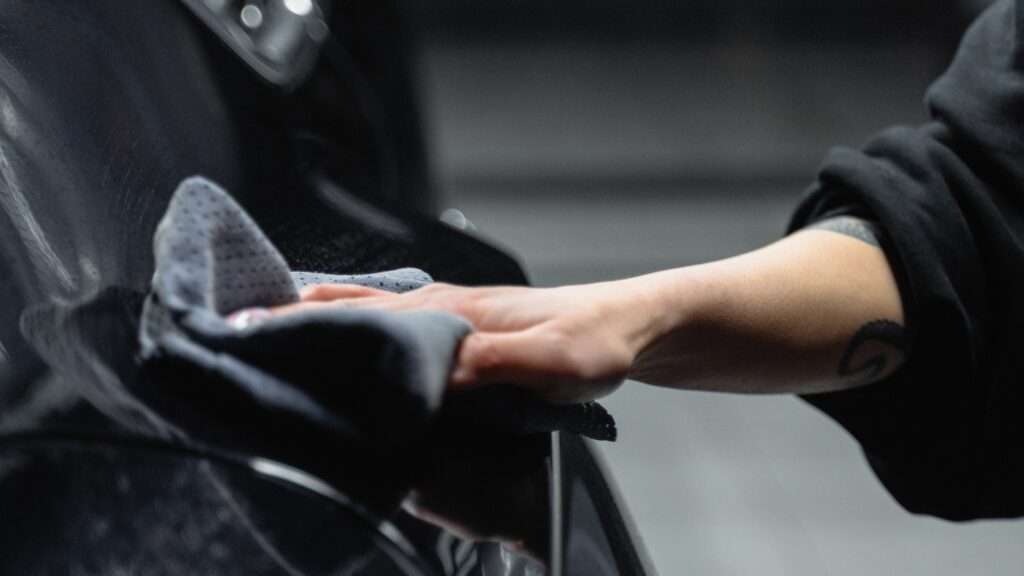
After paint correction, it’s time to final prep the surface for coating. This process involves using a pre-coating cleaner to remove remaining contaminants and oils from the surface. Using pre-coating cleaners ensures proper adherence to coating.
2. Applying Ceramic Car Coating
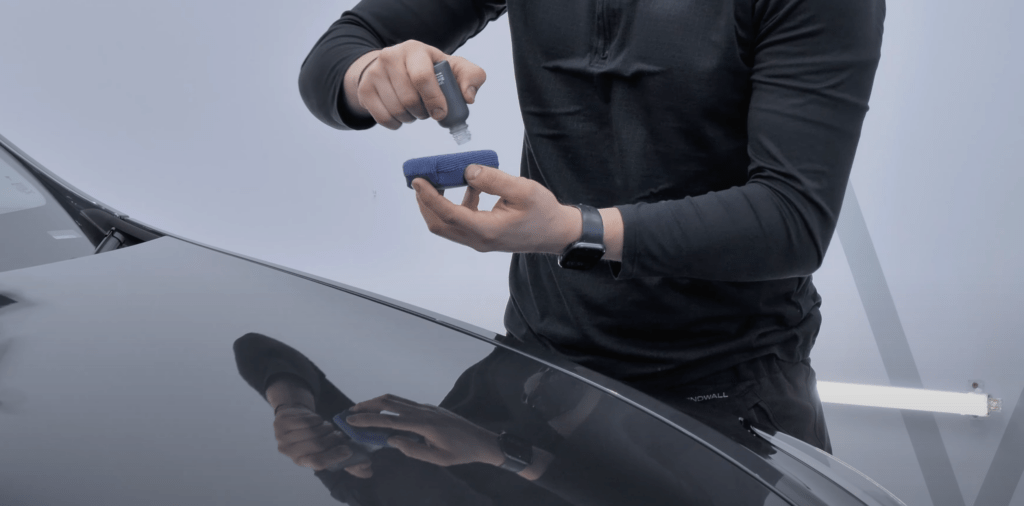
Once your car is clean and dry, you are ready to apply ceramic car coating. When you apply a ceramic coating, it’s important to work in small sections to ensure that the coating is applied evenly and avoid drying it on the surface before you spend it properly. Here is a step-by-step guide to follow:
- Shake the bottle with ceramic coating to mix the product thoroughly.
- Apply a small amount of the coating on a microfiber applicator pad, which usually stores with ceramic coating. You only need a small amount of the coating on the applicator, in this case, more doesn’t mean better.
- Spread the coating on the selected area in linear motions. You should choose application sections that are small enough to cover 10-15 minutes.
- Once a small section is coated, remove any excess product using a clean microfiber towel. It will ensure that the coating is applied evenly.
- Continue applying the coating to other small car sections until you coat the entire vehicle. Work from the top down to ensure that overspray won’t go down to already coated areas.
3. Curing Ceramic Car Coating

After you applied coating to the entire car, it’s important to allow it to cure properly. Curing time can vary depending on the specific product you use, so don’t forget to check the manufacturer’s instructions. Here is what you should do and what to avoid during the curing of ceramic car coating:
- You should keep your car dry and away from dust, debris, and direct sunlight while the coating cures. If you break this rule, the coating may not band properly to your car’s surface.
- Be patient – curing may take from several hours to several days, depending on the product you use and the surrounding environment. Don’t touch or wash your car during this time, as it can damage the coating and it will peel off.
- Make sure that area where you apply the coating is well-ventilated to prevent any buildup of fumes from the coating.
- During the curing process, you may notice some hazing or cloudiness on your car’s surface. It is normal and will disappear once the curing process is completed. However, if you let enough time for curing and you still see such imperfections, you may need to reapply the coating or seek professional assistance.
How Long Does Ceramic Car Coating Last?

Ceramic coating is well-known for having long-lasting protection, but how long does it last? Correct answers depend on many different factors. It includes the quality of the coating, how well car paint was prepared for application, and how well the coating was applied. Other factors that affect longevity are conditions in which you drive and how you maintain the ceramic coating.
In general, ceramic coating can last, on average, from two to five years. Some can last even longer. However, even when you use a high-quality ceramic coating that can last five years, you can affect its lifespan by several factors, including frequency of car washes, harsh weather conditions, and even the type of car shampoo you use.
Factors That Affect Ceramic Car Coating Longevity
Here are a few key factors to find out how long your ceramic coating may last:
- Quality of coating: not all ceramic coatings are equal. Avoiding cheap and low-quality ceramic coatings ensures your coating lasts longer and provides better protection for your car paint.
- Condition of your car’s paint: if you skip the preparation of the paint surface or make it improperly, the ceramic coating may not adhere as it should and may not last as long.
- Environmental factors: same as with your clear coat, exposure to extreme heat or cold, UV rays, can affect the longevity of the ceramic coating.
- Maintenance: to let your high-quality ceramic coating last as long as possible, you need to provide your coating with quality maintenance. This includes regular washing and detailing, using suitable chemicals, and avoiding abrasive materials.
Maintaining Ceramic Car Coating
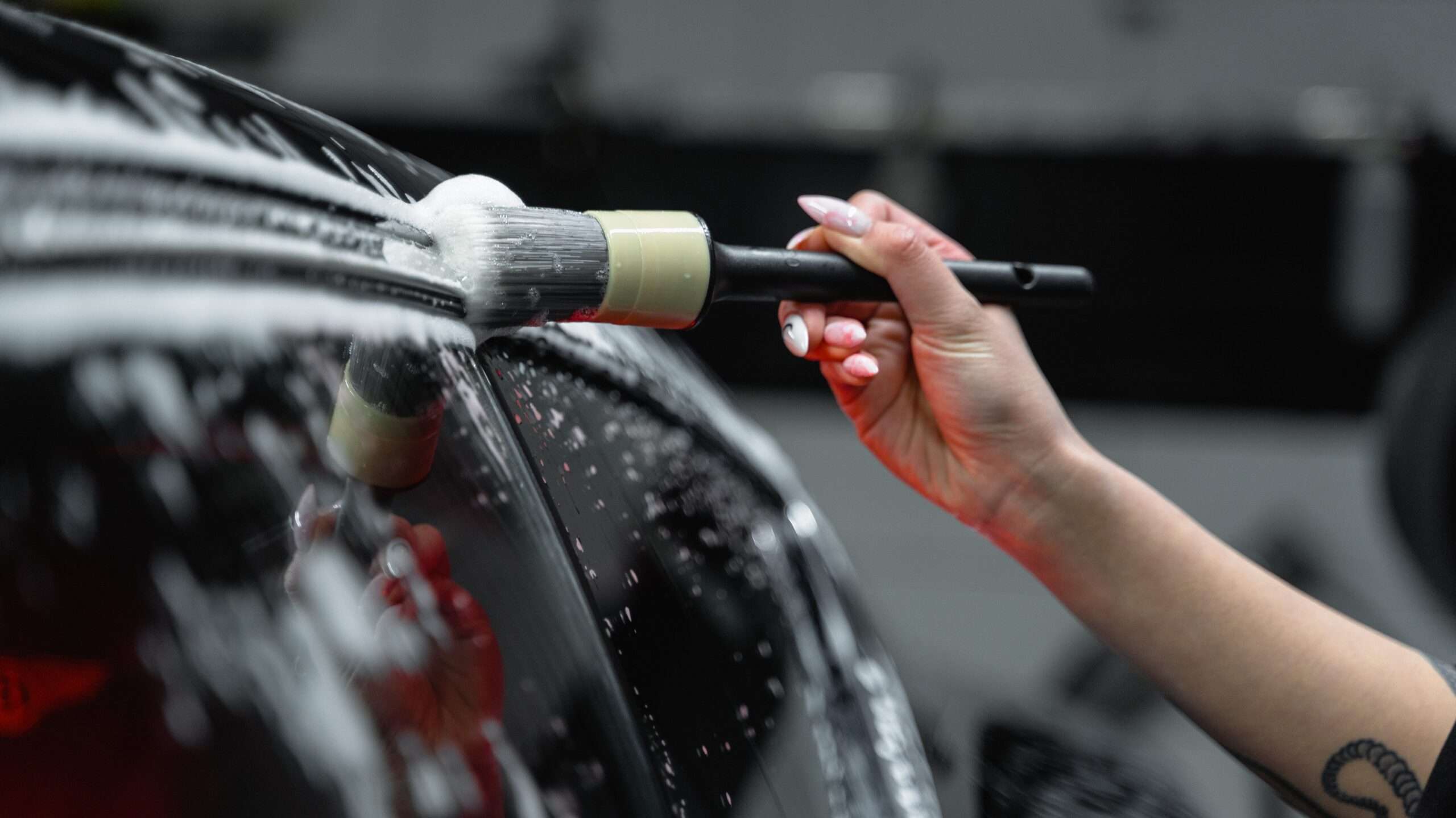
As we know to keep your coating last longer, you need to maintain it properly. As well, maintaining ceramic coating keeps its shine and hydrophobic properties longer. Here are some tips for properly maintaining your ceramic coating:
- Wash your car regularly: you should wash your vehicle regularly to remove all dirt and contaminants that can get into the ceramic coating and damage it. When you wash your car, use gentle pH-neutral shampoos and avoid using brushes and abrasive sponges.
- Dry your car properly: after washing your vehicle, dry it using high-quality drying towels and blowers to avoid leaving water marks and swirls.
- Avoid harsh chemicals: acid shampoos and cleaners can destroy ceramic coating, so be sure to use gentle pH-balanced car care products.
- Use a ceramic coating booster: overtime coating can start to lose some of its properties. Use ceramic booster to restore its original shine, protecting, and hydrophobic effects.
Ceramic Car Coating vs. Traditional Waxing

When it comes to a car’s paint protection and keeping it shiny, you have two main options: ceramic car coating or traditional waxing. Both of these methods are superior and have been used for years, but the question is, which one is better?
In this paragraph, we will compare ceramic and wax coatings. It will help you to make a reasonable choice that will be the most relevant and acceptable for your car’s protection needs. We will get deeper into the differences between these two methods and highlight the advantages of ceramic car coating.
Differences Between Ceramic Car Coating and Traditional Waxing
Ceramic car coating and traditional waxing may seem similar at first glance, but there are some significant differences between them. Let’s take a closer look:
Durability
Traditional waxing can last a few weeks, with proper maintenance – several months at most, whereas ceramic coating can last for several years. Ceramic car coating creates a hard bond with your paint’s surface and a protective layer that can be a shield against harsh weather conditions and aggressive chemicals. Traditional waxing creates a soft layer of protection that protects from harsh weather conditions and chemicals but can be easily removed and leave your paint without protection.
Protection
Ceramic car coating provides superior protection compared to traditional waxing. It creates a hard barrier that shields your car from different factors. Besides better protection from swirl marks, chemical contaminants, and environmental conditions, ceramic coating can protect the paint from little scratches. Wax coating is a thin soft layer that will not prevent scratches from a small rock on the highway.
Maintenance
Ceramic car coating requires less maintenance than traditional waxing. Ceramic coating is a hard layer, so even without any maintenance, it will protect your car for two years, but it will lose its shine and hydrophobic properties. Keeping it shiny and glossy also requires less time from you. Once a year, it requires deep cleaning to remove contaminants and ceramic boosting. Traditional waxes require maintenance every several weeks.
Appearance
Ceramic car coating provides a much deeper and glossier shine than traditional waxing. Also, it makes the color of the car’s paint look richer and glossier, making it look better than ever before. Traditional waxing can make your car’s paint shinier and enhance the richness of color but not at the same level as a ceramic coating.
Cost
This benefit is a matter for discussion. On one side, ceramic coating is more expensive and requires expensive preparation, while car wax can be easily applied at home and requires only a deep cleaning before application. On the other side, you apply ceramic coating once in several years, while wax should be applied every month. Depending on which ceramic coating or wax you are using, how well you prepare the car’s paint before application, what weather conditions you have, and how you maintain your coating, this benefit can go to ceramic coating or traditional waxing.
Top Brands for Ceramic Car Coating
Ceramic car coating become more and more popular among car enthusiasts due to its superior protection and durability. With higher demand, you receive more solutions from various car care brands and manufacturers. In this paragraph, we will discuss two of the top brands for ceramic car coating: Gtechniq and Ceramic Pro.
Gtechniq
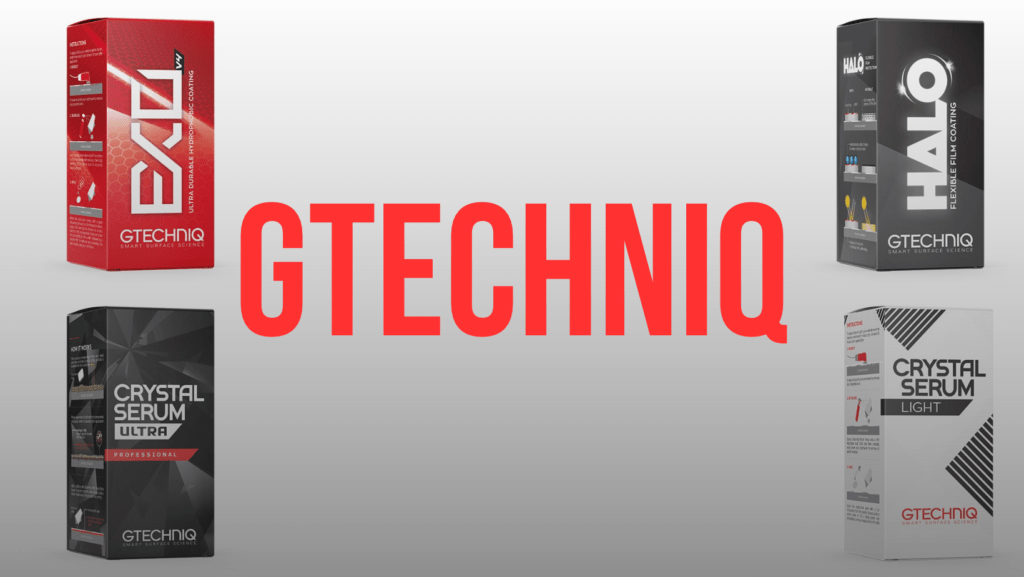
Gtechniq is a German premium brand of ceramic car coatings and other car care products that offers superior protection for cars, marines, and bikes. This brand has been a favorite among car enthusiasts and detailers for its exceptional durability and performance.
One of the main and most popular ceramic coatings of Gtechniq is Gtechniq Crystal Serum Ultra. A key feature of this product is its 10H hardness rating, which makes it one of the most durable ceramic coatings on the market. It means that it can protect your car’s surface from scratches, swirl marks, and other minor damages better than most other coatings.
Besides its durability, Gtechniq Crystal Serum Ultra also has incredible hydrophobic properties. It means that water and other liquids will roll off the surface, and washing and cleaning your car becomes simpler and less often.
Gtechniq Crystal Serum Ultra has excellent resistance to harsh chemicals and UV rays. It creates a hard shield on your car’s paint to prevent damage from these harmful elements and provide a stunning gloss and depth of car paint for years to come.
Ceramic Pro
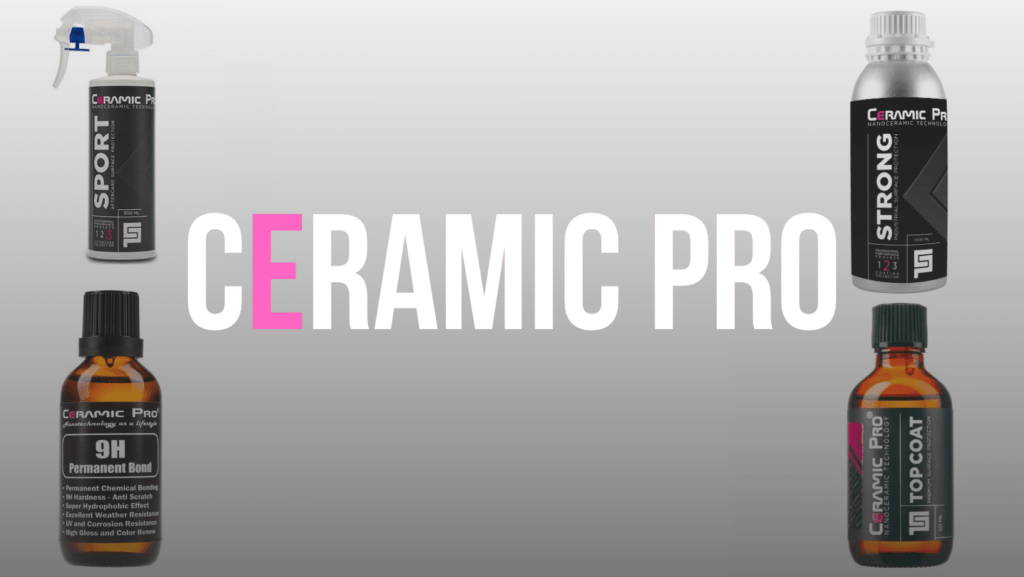
Ceramic Pro is another popular premium brand from Taiwan. It provides superior care and protection for cars, Motorsport, marine, aviation, and industrial sector. This brand is known for its innovative nanotechnology, which creates a strong bond between the coating and the surface of your car.
One of the key features of Ceramic Pro is its multi-layer method of protection. This car care brand offers a range of ceramic coatings, each with different levels of protection and durability. They have H9 coating, top coatings, and similar to H9 but thicker industrial Ceramic Pro Strong coating. It allows you to choose the right product for your needs.
Another benefit of Ceramic Pro is its resistance to oxidation and UV rays. It creates a hard shield against harmful environmental and chemical elements, preventing fading and discoloration.
As Gtechniq, Ceramic Pro offers amazing hydrophobic properties that repel water and dirt. It allows you to clean and wash your car faster and easier and prevents the car’s paint to get dirty too quickly.
Cost of Ceramic Car Coating

As we find out following this post, ceramic car coating is a fantastic solution to protect your car’s paint. This way of paint protection enhance shine and depth of color, but how much does ceramic coating cost? In this paragraph, we will try to answer these questions and find factors affecting the costs.
Factors That Affect the Cost of Ceramic Car Coating
There are four main factors affecting the cost of ceramic coating:
- Car size: the larger car you have, the more product you will need to protect it, which will drive up the cost.
- Car’s paint condition: before applying a ceramic coating, the paint surface should be perfect. If your vehicle has deep scratches, swirl marks, or other imperfections, you need to fix it. The price of such repair can be added to overall expenses on the ceramic coating.
- Brand: while top brands have approximately similar prices for their product, there are still some mid and low-quality products that can offer you ceramic coating. Buying top brands products leads to higher expenses.
- Level of service: besides different service quality and cost, one service can offer you different levels of service. They can provide you only with ceramic coating application or add extra options like paint correction and polishing. The better service you pick and the more service options you need, the more money you will spend.
So how much will you pay overall for ceramic coating? The answer also depends on the country you are from, but in general, the cost will vary widely, anywhere from $500-$2500. Always get a quote from a reputable ceramic coating provider before coming to the service. Don’t forget to check reviews to be sure that you are giving your car to professionals.
DIY vs. Professional Installation
DIY ceramic coating application is a huge money saver, but it has risks to make a mistake and eventually spending more than with a professional installation. That is why there are people who apply the ceramic coating by themselves and those who protect their cars only with professionals. Let’s take a look at the cost and benefits of each option.
DIY

DIY ceramic coating kits are available in stores and online, with an average price range between $50-$150. While this might seem like a huge money saver, you need to consider that applying ceramic coating requires certain levels of skill and accuracy. Another point to look at is for proper results of ceramic coating, you need to make paint-correction or polishing, which requires specific instruments. It can lead to higher expenses if you don’t have them.
Also, not everyone has a proper place for ceramic coating, with suitable temperature, humidity, and ventilation. If you are just a beginner, using the DIY ceramic coating application method can end up damaging your car’s paint and not getting the maximum benefits of ceramic coating.
If you have a suitable place for ceramic coating, enough tools for paint correction, and some extra time with a strong desire to protect your car, practice before applying it to your car. Once you finish practicing, the DIY application of ceramic coating will save you a lot of money and maybe start your road to becoming a professional detailer.
Professional Installation

Hiring a professional to apply a ceramic coating on your car can cost around $500-$2500, depending on factors we explained before. It is a huge gap between $150 for a DIY kit and $2500, but it’s the wrong way of looking at it. If these numbers looks tempting to you, look how to start a detailing business!
The professional detailer has a lot of experience to provide you with a perfect ceramic coating that will last as long as it should. Don’t forget that usually, the price of professional application of coatings includes paint correction or polishing which you don’t get with a $150 DIY kit.
Sometimes, the price of your mistake with a DIY application can be higher than using professional services. So if you have no detailing skills and don’t want to pay extra, apply the ceramic coating with a professional service. It will save you time and money. Check our guide to choose the best detailing service near you.
Conclusion
No doubt, the ceramic coating provides one of the best protection and shine for cars available on the market. We compared it with another popular method, such as traditional waxing, and I’m sure that everyone will pick their winner in this comparison.
As we know costs of ceramic coating can vary. On the other side, with proper paint preparation and coating application, ceramic coating can last years. It makes its price more reasonable in the long run. When you have the option to spend more upfront, definitely use a ceramic coating. It will be more effective and, in some cases, cheaper than applying waxes every month.
For those who want to make a DIY application, practice first. Follow the steps in our guide to ensure the results you expect from the ceramic coating.
Overall, if you’re looking for a way to protect your car’s paint and keep its look brand new for years to come, ceramic car coating is an excellent solution. With its long-lasting durability and superior protection, it’s a reasonable investment for any car owner who wants to keep their vehicle in top condition.
